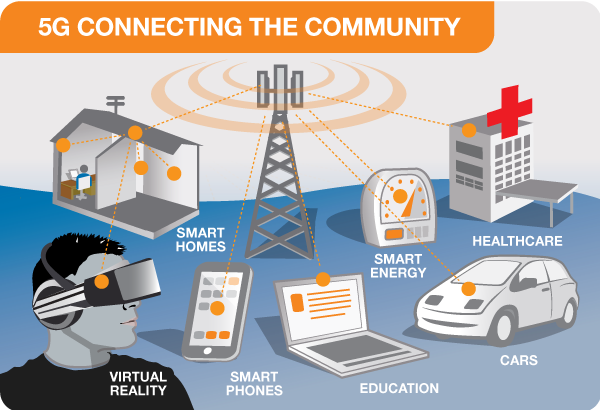5G technology is transforming the way we connect and communicate. Offering lightning-fast speeds and unparalleled network capacity, 5G is the backbone for smart devices, artificial intelligence, self-driving vehicle, and energy management.
“With great power comes great responsibility”.

What’s Happening & Why This Matters
5G’s importance also brings significant security concerns that need to be addressed.
Let’s take a closer look at the top five security issues surrounding 5G:
- Cyberattacks on Critical Infrastructure: As 5G becomes the backbone of vital infrastructure like transportation, healthcare, and power grids, the potential impact of cyberattacks becomes more severe. Threat actors may exploit vulnerabilities in 5G networks to launch attacks targeting critical infrastructure, causing widespread disruption and potential harm to public safety.
- Increased Attack Surface: The massive device density capabilities of 5G enable the proliferation of connected devices in the Internet of Things (IoT) ecosystem, expanding the potential entry points for cyber threats exponentially. This presents a considerable challenge for cybersecurity professionals in securing this vast and diverse array of endpoints.
- Supply Chain Vulnerabilities: The global nature of 5G infrastructure deployment introduces supply chain complexities that pose significant security risks. Every layer of the 5G ecosystem is susceptible to compromise, from hardware components to software protocols, making supply chain attacks a major concern.
- Privacy Concerns and Data Protection: With the seamless collection and transmission of vast amounts of personal data enabled by 5G, privacy concerns arise regarding unauthorized access, misuse, or exploitation. Robust data protection mechanisms become crucial to safeguarding user privacy as 5G facilitates the proliferation of IoT devices in various domains.
- Emerging Threats from Artificial Intelligence and Machine Learning: The integration of AI and ML technologies into 5G presents new security challenges. While these technologies offer opportunities for enhancing network security, they also present vulnerabilities that adversaries can exploit, such as adversarial AI attacks, data poisoning, and model inversion attacks.
TF Summary: What’s Next
Addressing these security concerns requires a collaborative and proactive approach from industry, government, and academia. Robust cybersecurity measures, threat intelligence sharing, regulatory frameworks, and investments in research and development are essential components of a comprehensive strategy to mitigate the risks associated with 5G technology.
Prioritizing security and resilience in the design, deployment, and operation of 5G networks is essential to unlock the full potential of this transformative technology while safeguarding against emerging cyber threats.


